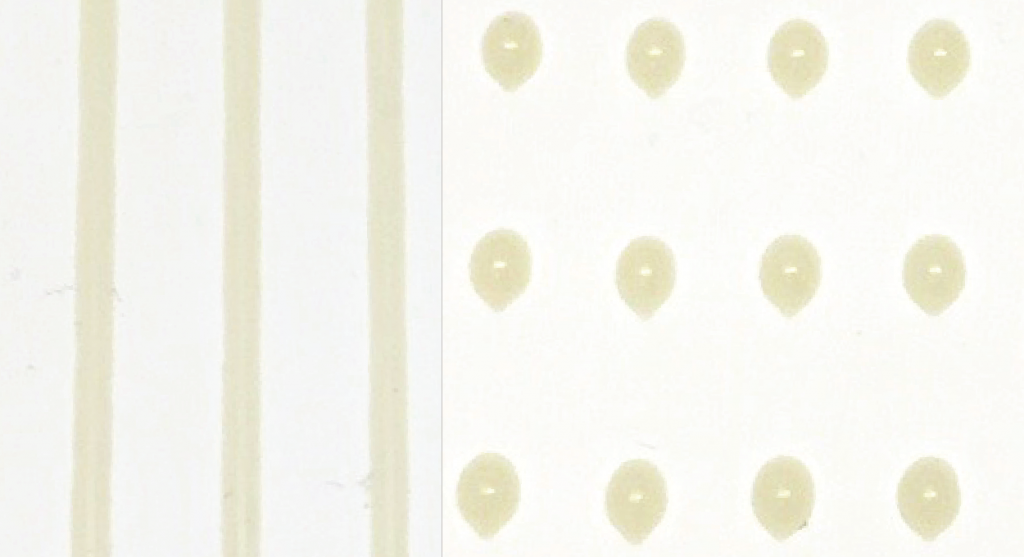Manufacturers have been using compressed air systems for many years. In fact, most adhesive dispensing systems today use pneumatics simply because air has always been available and this was the original design criteria in the development of hot melt system gun technology. Although pneumatic systems will get the job done, there are several known, long-term issues associated with compressed air:
1. Constant and costly replacement of parts gone bad.
2. Diminishing solenoid performance.
3. Pneumatic guns plus solenoid have eleven dynamic seals per set compared to electric guns that have no dynamic seals.
It’s a fact; Pneumatic valve performance starts diminishing shortly after installation. Most modules are replaced because they won’t fire glue, not because they are leaking from the glue seal. This is because the pneumatic portion of the valve module has failed, not because the fluid seal failed. Compressed air is the cause. Many nozzles are replaced because there is no glue coming from the module. Although nozzles do sometimes get plugged, there are just as many issues with the module or air solenoid not performing at full capacity that give the impression that the nozzle is the cause. The nozzles, module and air activation solenoid are all replaced to be sure the problem is resolved.
Air activation solenoids, like valve modules, are constantly pushing air through them. The combination of heat, debris, oil, and moisture in the air will cause the solenoid performance to start diminishing very quickly. A solenoid can still open and close, but it might only be working at 40% of its full capability. This means the volume of air going through the air solenoid is most likely much less than what is shown on the regulator. The symptoms of this issue are sloppy glue patterns, spitting, inconsistent glue patterns and in some cases, no glue at all.
Manufacturing compressed air is expensive and because of the age of most systems, the quality of the air diminishes each year. Compressed air contains debris that enters the piston pump, air solenoids, and glue module with each activation. This problem can be completely avoided by using an all-electric hot melt system. The all-electric hot melt system removes this contamination, resulting in higher quality and much cleaner product. An all-electric system does not have dynamic seals in the valves, contains a built-in troubleshooting guide, built-in gun filter, and there are no solenoids required. All of these prevent the constant replacement of system parts and diminishing performance; two issues that are common in pneumatic systems.
All-electric systems not only provide a higher quality product but also decrease downtime caused by diminishing system parts, which simultaneously increases production. Whether you are a folding carton, packaging, or print-finishing manufacturer, all-electric adhesive systems can improve your production rates and increase the quality of your product.
We tested our CHOICE all-electric system over a three-week period with one of our customers that was using a pneumatic valve and a traditional bead of adhesive for their card attaching applications. The customer provided us with a sample product of card attachment that was completed with their pneumatic system. Our goal was to run this exact same card attaching the application with our all-electric system for three weeks to show the customer the adhesive consumption savings and cost savings they would achieve by using our CHOICE system compared to their previous method.
First, we weighed ten of the products glued with the traditional, pneumatic valve as well as ten products glued with our all-electric system. After obtaining the weight of the glued cards, we subtracted the card weight (6.29 grams) to determine the weight of the adhesive applied to each card. The results determined that there is a 60% reduction in adhesive usage when using the all-electric system compared to the pneumatic system.
We went a step further to discover the financial savings they could attain if 8,000,000 pieces were produced. Now that we had determined the weight of the adhesive applied to each card for the two systems, we calculated how many pounds of adhesive would be used with 8,000,000 pieces of product by the pneumatic system (3,227.57 lbs) versus the all-electric system (1,287.50 lbs).
Using a hypothetical price of $3.00 per pound of adhesive we were able to determine the adhesive cost for the pneumatic system at $9,682.71 and the adhesive cost of the all-electric system at $3,862.50. The bottom line, the customer saves $5,820.21 using the all-electric system.
The test clearly showed the customer that the all-electric system lowers adhesive consumption by 75%, which in turn lowers the adhesive cost. The new systems paid for themselves in less than 4 months.
The great news is that Valco Melton’s CHOICE system can be implemented onto any existing line, but moreover, the amount of investment you make today will be in direct correlation with the return you will see tomorrow. You can learn more about how this all-electric system can help your business today by speaking to one of Valco Melton’s specialists.
Hard Savings:
- Adhesive Consumption
- Removal of Pneumatics
- Reduction in cost of plant air usage
- Less spare parts associated with an electric system
- Less degradation to valves because of no plant air
- Less moving seals
Soft Savings:
- Downtime associated with pneumatics
- Less stoppage to change out solenoids and seals
- Nozzle Plugging
- Larger nozzle orifice and lower operating pressures
- Also helps with machine safety
- Faster Production Speeds
- Gives you the ability to stitch at higher production rates with clean, crisp patterns


